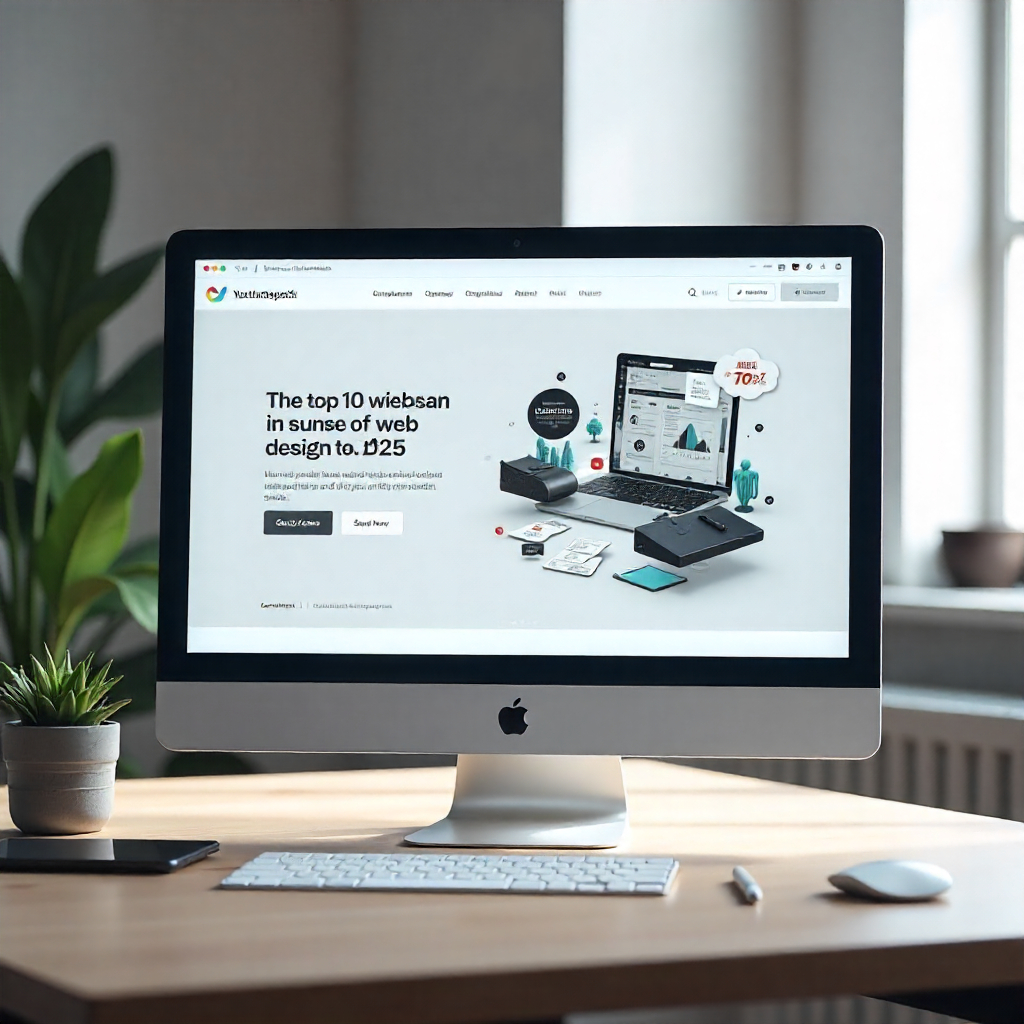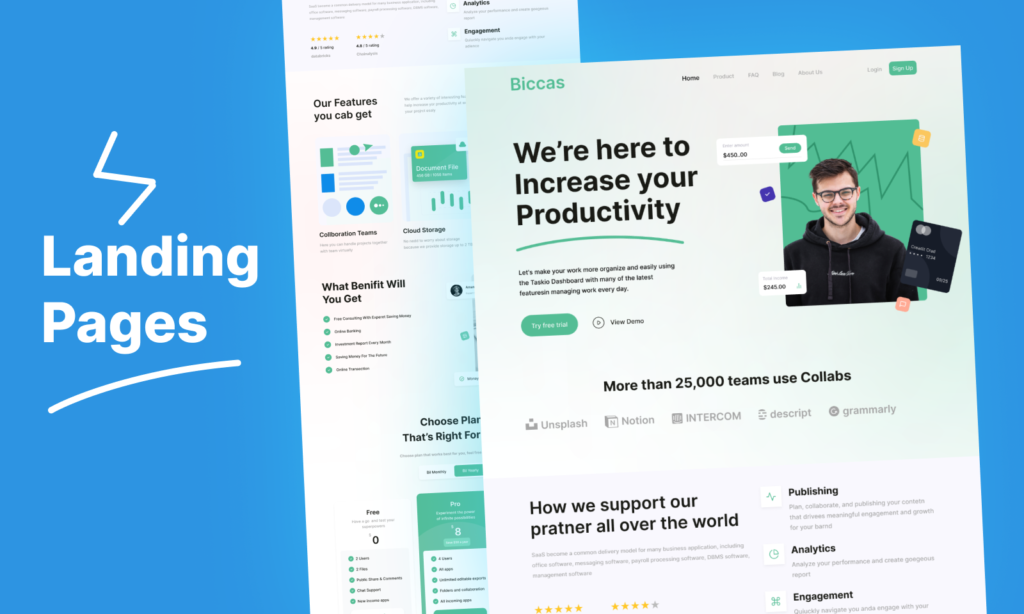Top 10 Web Design Trends Businesses Must Follow in 2025
In 2025, a website is no longer just a digital identity—it’s the primary gateway between businesses and customers. First impressions now happen online, and within seconds, visitors decide whether to trust a brand. This is why staying updated with web design trends has become more important than ever.
Modern web design is not just about looking attractive—it’s about performance, usability, inclusivity, and technology. The latest website design ideas in 2025 emphasize AI-driven personalization, immersive experiences, speed, and accessibility, all of which directly impact conversions and SEO rankings.
Whether you’re a startup, e-commerce brand, or service provider, here are the top 10 web design trends in 2025 that your business must follow to stay ahead.
1. AI-Powered Personalization
Artificial Intelligence (AI) has gone from being a buzzword to a necessity in modern web design. In 2025, AI-driven personalization helps businesses deliver content and design elements tailored to each visitor.
- Dynamic Content – Websites adapt based on browsing history, location, or device.
- AI Chatbots & Virtual Assistants – Provide 24/7 support, answer FAQs, and guide users through the buying journey.
- Smart Recommendations – Just like Netflix or Amazon, AI tools predict what users might want to see next.
👉 Businesses that integrate AI into their website design can boost engagement, reduce bounce rates, and increase conversions.
2. Minimalist & Clean UI
The phrase “less is more” remains a cornerstone of modern web design. Minimalism doesn’t mean boring—it means clarity. In 2025, websites with clean layouts, ample white space, and easy navigation are performing better than cluttered designs.
- Fast-loading pages improve SEO.
- Users focus more on content and call-to-action.
- Simplified designs are mobile-friendly.
For businesses, a minimalist UI helps showcase products or services without overwhelming visitors. Think Apple’s website—simple yet impactful.
3. Dark Mode & Adaptive Themes
With growing awareness about eye health and personalized experiences, dark mode has become a mainstream trend. In 2025, websites will be offering adaptive themes that automatically adjust based on user preferences or device settings.
- Enhances readability in low light.
- Reduces eye strain.
- Provides a modern, sleek look.
Businesses in creative industries (design, gaming, fashion) especially benefit from dark mode, as it makes visuals pop and strengthens brand identity.
4. 3D & Immersive Visuals
Web design in 2025 is no longer flat—it’s immersive. With advancements in WebGL, AR, and VR, websites now offer interactive 3D visuals.
- E-commerce brands showcase 3D product previews.
- Real estate websites offer virtual walkthroughs.
- Educational sites use AR/VR for training and simulations.
Immersive visuals not only grab attention but also increase user engagement time, which directly supports SEO rankings.
5. Mobile-First & Responsive Design
Over 60% of global traffic now comes from mobile devices, making mobile-first design non-negotiable. Google also prioritizes mobile-friendly websites in its search rankings.
- Responsive layouts adapt seamlessly to any screen size.
- Faster loading improves Core Web Vitals.
- Thumb-friendly navigation enhances user experience.
👉 If your website isn’t optimized for mobile, you’re losing traffic, leads, and revenue.
6. Micro-Interactions & Animations
Small animations, also called micro-interactions, play a huge role in keeping users engaged. In 2025, businesses are using animations not just for style, but for functionality.
- Button hover effects signal interactivity.
- Animated progress bars make waiting less boring.
- Scroll-triggered animations tell stories as users navigate.
These subtle design elements create a sense of satisfaction and improve user retention.
7. Voice User Interface (VUI)
With the rise of Alexa, Siri, and Google Assistant, voice search optimization is becoming a vital part of modern web design. Websites in 2025 are adapting to voice user interfaces (VUI) that allow visitors to navigate and search without typing.
- Voice-enabled search bars.
- Accessibility for visually impaired users.
- Faster and hands-free browsing.
👉 For businesses, optimizing websites for voice search means capturing a growing segment of customers who prefer speaking over typing.
8. Sustainability in Web Design
Sustainability is not just an environmental issue anymore—it’s also a design trend. In 2025, websites are being optimized for energy efficiency and reduced carbon footprint.
- Lightweight designs = faster loading = less energy use.
- Eco-friendly hosting providers (powered by renewable energy).
- Optimized media files reduce server load.
Green web design not only benefits the planet but also appeals to eco-conscious customers, strengthening brand image.
9. Bold Typography & Custom Fonts
Typography has become a powerful storytelling tool in modern web design. In 2025, brands are moving towards bold, unique fonts to establish identity and stand out.
- Strong headlines grab attention instantly.
- Custom fonts differentiate businesses from competitors.
- Readability remains a top priority across devices.
A creative yet clear typeface can turn a simple message into a memorable brand statement.
10. Accessibility & Inclusive Design
A truly modern website is one that everyone can use. In 2025, accessibility is no longer optional—it’s a legal and ethical requirement.
- WCAG (Web Content Accessibility Guidelines) compliance.
- Features like text-to-speech, high-contrast mode, and keyboard navigation.
- Inclusive design that considers people with disabilities.
By prioritizing inclusivity, businesses not only comply with standards but also expand their audience reach.
Final Thoughts
The web is evolving at lightning speed, and businesses that fail to adapt risk falling behind. These web design trends in 2025—from AI personalization to accessibility—are shaping the future of digital experiences.
Implementing even a few of these latest website design ideas can significantly improve user experience, boost SEO rankings, and strengthen brand identity.
If your business is ready to revamp its online presence with modern web design, now is the perfect time to get started. The earlier you embrace these trends, the faster you’ll stay ahead of competitors.
Frequently Asked Questions (FAQs) About Web Design Trends 2025
1. What are the biggest web design trends in 2025?
The top trends include AI-powered personalization, minimalist layouts, dark mode, immersive 3D visuals, voice user interfaces, and accessibility-focused design. Businesses that adopt these will see better engagement and SEO rankings.
2. Why is modern web design important for businesses?
Modern web design ensures a website is fast, user-friendly, mobile-responsive, and accessible. It improves user experience, builds trust, and increases conversions—all while boosting search engine visibility.
3. How does web design affect SEO?
Web design impacts SEO through site speed, mobile responsiveness, structured layouts, accessibility, and user engagement. A poorly designed website can lead to high bounce rates, which hurts search rankings.
4. Should businesses invest in AI for their websites?
Yes. AI tools like chatbots, personalized recommendations, and smart search functions can improve customer experience and increase conversions, making AI integration a valuable investment.
5. What is the future of website design beyond 2025?
Beyond 2025, we can expect more immersive AR/VR experiences, deeper AI integrations, voice-driven navigation, and even metaverse-ready websites that provide fully interactive brand experiences.


